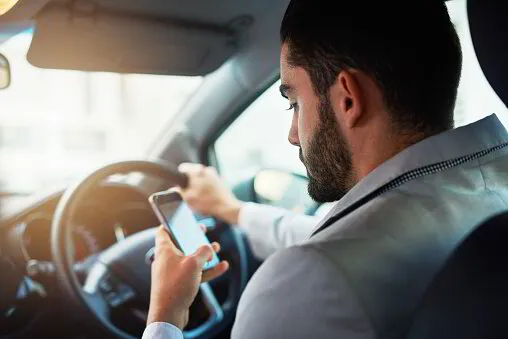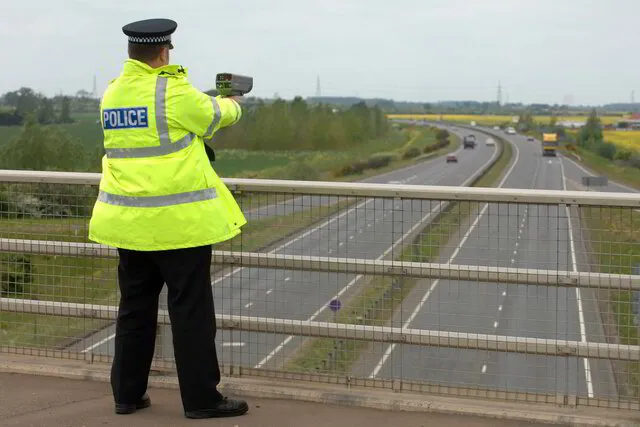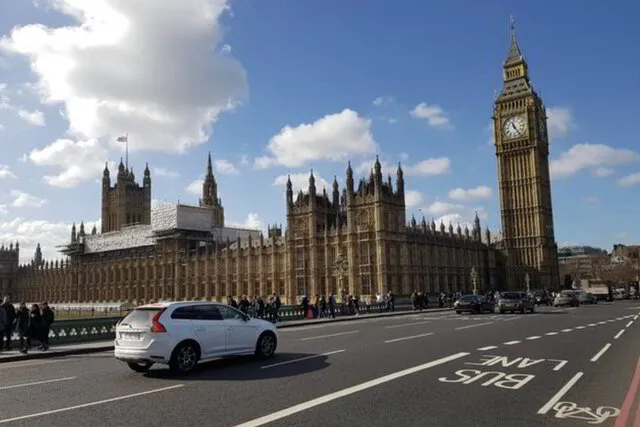Introduced in December 2003, the first mobile phone driving laws represented an attempt to keep up with then-emerging technologies and improve road safety standards. From 25 March 2022 you are breaking the law if you use a handheld phone while driving. You could be fined up to £1,000, plus 6 points on your licence (or a driving ban).
However, over the past two decades, mobile phones have evolved to offer a myriad of functionalities. In turn, the old Highway Code appeared updated and presented several grey areas. And, a pilot study conducted in 2021 showed that, within a six-month period, over 15,000 drivers touched, used, or unlocked their phones - on a single lane of a highway stretch!
In an effort to create safer roads for all users and prepare for the advent of self-driving vehicles, the Department of Transport introduced stricter new rules on mobile phone use while driving. Discover them in this guide
What Are the Changes to the Law?
The new laws, which were proposed in parliament in November 2021, aim to improve road safety for all users. Indeed, while road accidents fell by 22% in 2020 due to the pandemic-related restrictions, they are now back to pre-Covid-19 levels and average over 110,000 a year. But what’s even more important is that the great majority of these accidents stem from human error and are preventable.
The new changes to the law strive to reduce the risk by eliminating the number one distraction for drivers: their mobile phones.
With the new “zero-tolerance approach” - as described by Transport Secretary Grant Shapps - the 2022 changes to the Highway Code ban the use of mobile phones, smartphones, and handheld devices while driving altogether.
As well as maintaining speaking on the phone illegal, the new regulations ban actions like:
- Illuminating or unlocking the screen
- Checking notifications or the time
- Accepting or rejecting a call
- Composing messages or emails
- Taking photos or videos or using the phone’s camera roll
- Scrolling through a playlist or searching for music
- Reading or playing on the phone
It is also important to notice that the new law sets precise guidelines regarding when these actions are allowed and when they are not. Generally, when in a vehicle with the engine running (or powered on in the case of electric vehicles and cars using the start and stop technology), drivers are not allowed to use their phones and all the above rules apply. This includes when stopping at a traffic light or sitting in traffic. In this sense the law remains as it was - you were always required to pull over and turn the engine off. However, the law has now broadened from ‘holding your phone to make a call’ to ‘holding your phone for any purpose’
Why Did the Government Change the Law?
The original law introduced in 2003 and updated in 2007 was designed to prevent “interactive communication” and mobile phone use while driving. However, several factors have made this law ineffective and outdated over the past 19 years.
Mobile devices have developed rapidly and are now much more powerful. The old law only took into account ‘communication related activities’, such as making a phone call. From a legal perspective some features (such as taking photos, for example) were not illegal (even though they were clearly dangerous). The change in law addresses this point.
Additionally, new technologies are revolutionising the driving experience. For example, a car’s infotainment system, voice control, navigation system, and autonomous driving features have removed the need for phone usage while driving.
With the new law, the use of handheld devices is now banned altogether, thus getting rid of existing grey areas or room for interpretation. Ultimately, any driver or passenger supervising a learner using a phone while the car’s engine is running can be prosecuted.
What Does the New Law Mean?
The new law means that it will be an offence to use “...any device which is capable of interactive communication even if that functionality is not enabled at the time.”
The understanding of the word ‘using’ has also be broadened and now covers all the following:
- illuminating the screen
- checking the time
- checking notifications
- unlocking the device
- making, receiving, or rejecting a telephone or internet based call
- sending, receiving or uploading oral or written content
- sending, receiving or uploading a photo or video
- utilising camera, video, or sound recording
- drafting any text
- accessing any stored data such as documents, books, audio files, photos, videos, films, playlists, notes or messages
- accessing an app
- accessing the internet
The Government’s view is very clear: keep your hands on the wheel and off your phone.
What Are the Penalties?
Penalties for using a mobile phone while driving have always been severe, and, with the law upgrades that came into effect in 2017, they became even steeper. But the new 2022 updates make these penalties even harder to digest.
Today, any driver prosecuted for using their mobile phone while driving can face a £200 fine and six penalty points on their driving licence. And, since 12 points are enough to lead to a licence disqualification, drivers only need to get caught twice to face long-lasting consequences - or once if they have passed their driving test within the past 2 years.
There are other factors that might come into consideration:
- If a mobile device causes the driver to lose full view over the road ahead, this can lead to 3 penalty points
- Fines can be as steep as £1,000 for car drivers and £2,500 for lorry or bus drivers
- A licence disqualification can lead to much greater financial losses, including the cost of resitting the exam, paying for public transport, and missing work opportunities.
What Are the Exemptions?
While hand-held devices are illegal, drivers can still use hands-free devices, including sat-navs and the car’s infotainment system. The new law does not leave room for interpretation, but it offers some exemptions worth knowing:
- Hands-free devices can be used if they are secured on a cradle. If the car does not offer a suitable tech system, the driver will need to find a place to stop and switch off the car before using their phones.
- Mobile phones can be used at petrol stations, drive-through restaurants, and road tolls but only to pay for a service using NFC or contactless technologies. Other online payments are not permitted.
- Drivers are still allowed to use their phones to make emergency 999 calls, but only if it is unsafe or impractical for them to stop.
- Mobile phones can also be used when the car is safely parked or to remotely park a car.
Final Thoughts
In this article, you can find everything you need to know to avoid being prosecuted for using your phone while driving. As the new law has already come into effect, you might consider getting your car and device ready to avoid penalties and fees.
In the absence of using a proper cradle and Bluetooth connection, the safest place for your phone is in the glovebox – switched off.
If you are charged with using your phone or any other handheld device while driving, get expert legal advice from a motoring lawyer as soon as possible. It will increase your chances of getting the best outcome for your case. Call me at 01516013743 and get a free initial consultation.



